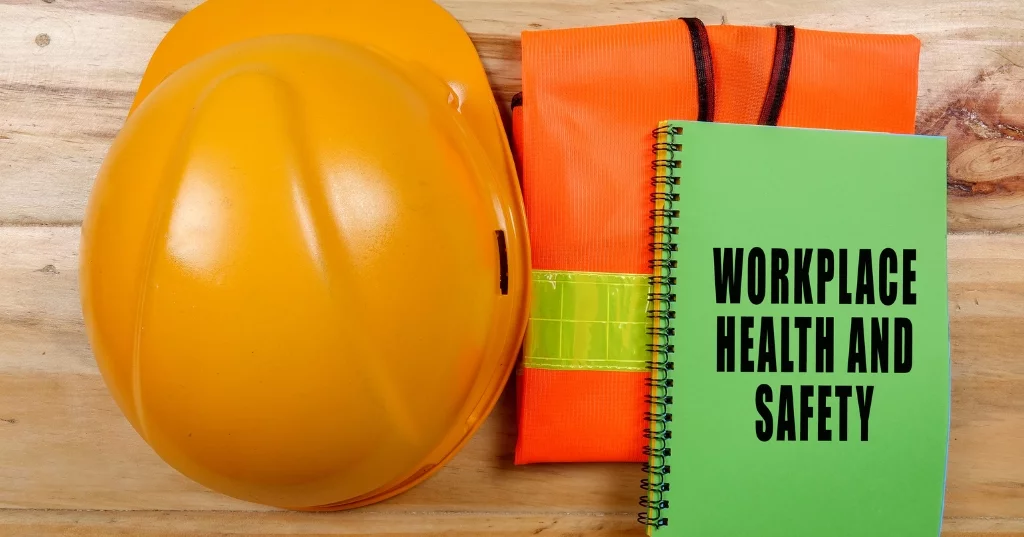A guide to workplace health and safety

Workplace health and safety – a right and an obligation
When they leave for work in the mornings, most Australians expect to return home at night safe and whole. Unfortunately, workplace accidents can turn that assumption on its head in a heartbeat. Workplace health and safety laws have been around for less than a century, but they’ve been life-changing for Australian employees. Workplace health and safety laws have given everyday Australians the right to work free from harm in the workplace.
Why is workplace health and safety so important?
In Australia, employers must ensure workplaces are safe and healthy for their staff and employees.
Safe Work Australia compiles data on workplace accidents and fatalities. Its data shows Australian workplace health and safety progress since the early 2000s. Workplace accidents and deaths peaked in 2007, and by 2020 there has been a 50 per cent decrease in workplace fatalities. This is a drastic improvement over the 13 years.
While workplace injuries are declining over time, the consequences for individuals affected by illness and injury in the workplace continue to be devastating. Particularly in high-risk industries, these consequences can be life-altering or even fatal.
Why is health and safety training essential for all industries?
It’s obvious why health and safety in the workplace should be front of mind in high-risk industries. Workers operating heavy machinery face a genuine risk of injury when employers fail to enforce safety regulations properly. Vehicle drivers and operators are the largest group of workers injured or killed at work in Australia.
The need for workplace health and safety may be less evident in other occupations. For instance, what risks are receptionists, clerks, executive assistants, or the marketing team subjected to? The risk profile for workers in these jobs is lower for severe injury or death, but other risks remain. These include:
● repetitive strain injury
● back injuries
● injuries from trips, cuts, burns and more.
Mental health can also be affected by an unsafe workplace. Safe Work Australia reports that:
● In 2018-2019 a total of $736 million was paid in workers’ compensation for serious claims relating to mental health
Risks to mental health in the workplace are referred to as psychosocial risks.
Psychosocial risks, long-term exposure to high stress levels, repetitive strain and other injuries are why workplace health and safety training is critical across all industries.
What happens if someone is injured at work?
Unfortunately, accidents happen even in the safest workplaces.
Australian workplaces are required to have a designed first aid officer. This person typically volunteers for this role and receives basic first-aid training. If someone is injured or becomes ill at work, it’s the first aid officer’s job to manage the situation. This may mean calling an ambulance if the injury is severe or the officer suspects the employee is seriously ill. The first aid officer will use the workplace’s first aid kit to assist with minor injuries.
All workplaces in Australia with employees or staff must have workers’ compensation insurance. Workers’ compensation insurance covers the unwell or injured staff member’s wages while they cannot work as well as medical expenses and potential rehabilitation costs.
A short history of Occupational Health and Safety in Australia
Occupational Health and Safety laws are a hard-won right.
Before workplace health and safety laws, employers decided what conditions they deemed reasonable for their employees to work in. This often led to exploitative conditions like:
● working unreasonably long hours without appropriate compensation
● exposure to dangerous chemicals
● poor air circulation
● excessive repetitive motion, which can lead to injury
In 1956 the High Court of Australia found in favour of an employee who had been badly burned by hot bitumen on a worksite. The court found that his employer had a reasonable duty of care towards his employee and was required to provide a reasonably safe working environment. This case became the catalyst for workplace health and safety legislation in Australia.
Before this change, workers had little to no legal recourse if they were injured or became ill due to their work. The risk of injury was also significantly higher than today, as industrial machines used in the 1940s and 1950s did not have the same safety precautions as modern machines.
Of course, many laws governing workplace conduct have changed since the 1956 ruling. Today, there are laws covering discrimination, sexual harassment and plenty of other workplace situations that would previously have been governed at the employer’s discretion.
Today’s laws not only cover what happens when someone is injured or killed at work but also specify that employers must take proactive steps to reduce risks in the workplace.
Workplace Health and Safety events
To learn more about health and safety in the workplace, consider attending an event featuring workplace health and safety speakers, or invite workplace safety speakers to address your employees directly on your site. Events like this can give invaluable insight into why it’s so important to think about workplace health and safety, and good workplace health and safety speakers can bring this topic to life. Contact ICMI for access to Australia’s best workplace safety speakers today.
Call 1800 334 625 to book a health and safety speaker for your next event.